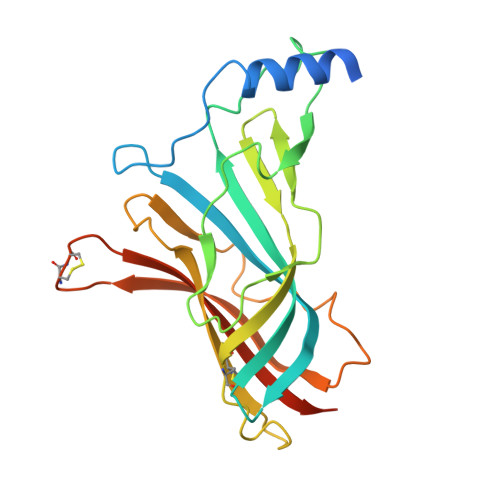Acetylcholine Binding Protein (Achbp) as Template for Hierarchical in Silico Screening Procedures to Identify Structurally Novel Ligands for the Nicotinic Receptors.
Akdemir, A., Rucktooa, P., Jongejan, A., Elk, R.V., Bertrand, S., Sixma, T.K., Bertrand, D., Smit, A.B., Leurs, R., De Graaf, C., De Esch, I.J.(2011) Bioorg Med Chem 19: 6107
- PubMed: 21920761
- DOI: https://doi.org/10.1016/j.bmc.2011.08.028
- Primary Citation of Related Structures:
2XNT, 2XNU, 2XNV - PubMed Abstract:
Hierarchical in silico screening protocols against the agonist bound acetylcholine binding protein (AChBP) crystal structure were efficient in identifying novel chemotypes for AChBP and the human α7 receptor. Two hit structures were cocrystallized with AChBP revealing intermolecular cation-π interactions with loop C but lacking intermolecular hydrogen bonding. The compounds act as competitive α7 receptor antagonists and as non-competitive α4β2 receptor inhibitors. These results underline the usability of AChBP in structure-based in silico screening strategies in finding novel scaffolds for the α7 receptor, but also illustrates some limitations of using AChBP as bait to find competitive α4β2 receptor ligands and α7 receptor agonists.
Organizational Affiliation:
Leiden/Amsterdam Center for Drug Research, Division of Medicinal Chemistry, Faculty of Sciences, VU University Amsterdam, The Netherlands.
















